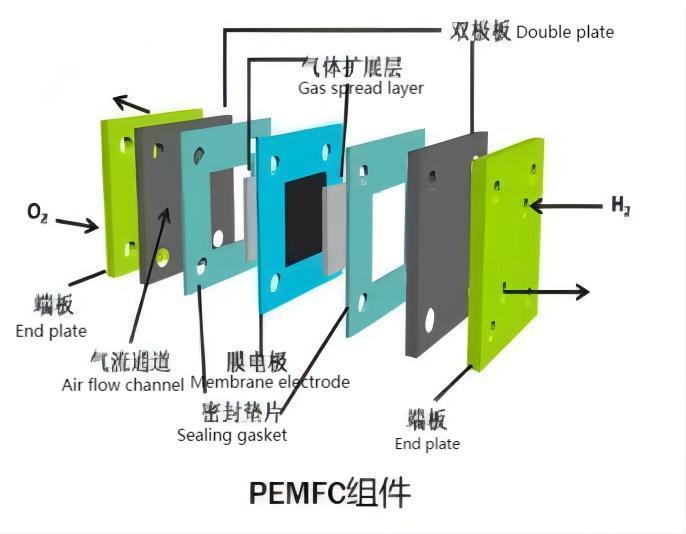Bipolar plate is the core component of the reactor, which has a great impact on the performance and cost of the reactor. At present, the bipolar plate is mainly divided into graphite plate, composite plate and metal plate according to the material.
Bipolar plate is one of the core parts of PEMFC, its main role is to transport gas through the surface flow field, collect and conduct the current, heat and water generated by the reaction. Depending on the material type, the weight of the PEMFCs stack is about 60% to 80% and the cost is about 30%. According to the functional requirements of the bipolar plate, and considering the acidic electrochemical reaction environment of PEMFC, the bipolar plate is required to have high requirements for electrical conductivity, air tightness, mechanical properties, corrosion resistance, etc.
The double plate according to the materials mainly divided into three categories graphite plate, composite plate, metal plate,graphite double plate is the most commonly used at present domestic PEMFC double plate, electrical conductivity, thermal conductivity, good stability and corrosion resistance and other performance but relatively poor mechanical properties, brittle, machining difficulties lead to high cost problems plagued by many manufacturers.
Graphite bipolar plate introduction:
Bipolar plates made of graphite have good electrical conductivity, thermal conductivity and corrosion resistance, and are the most commonly used bipolar plates in PEMFCS. However, its disadvantages are also more obvious: the graphitization temperature of graphite plate is usually higher than 2500℃, which needs to be carried out according to the strict heating procedure, and the time is long; The machining process is slow, the cycle is long, and the precision of the machine is high, resulting in the high cost of graphite plate; Graphite is fragile, the finished plate needs to be carefully handled, assembly is difficult; Graphite is porous, so the plates need to be a few millimeters thick to allow the gases to separate, resulting in a lower density of the material itself, but a heavier finished product.
Preparation of graphite bipolar plate:
The toner or graphite powder is mixed with graphitized resin, press formed, and graphitized at high temperature (usually at 2200~2800C) in a reducing atmosphere or under vacuum conditions. Then, the graphite plate is impregnated to seal the hole, and then the numerical control machine is used to process the required gas passage on its surface. High TEMPERATURE GRAPHITIZATION AND MACHINING OF GAS CHANNELS ARE THE MAIN REASONS FOR THE HIGH COST OF BIPOLAR PLATES, WITH MACHINING ACCOUNTING FOR almost 60% OF THE TOTAL FUEL CELL COST.
Bipolar plate is one of the most core components in the fuel cell stack. Its main functions are as follows:
1、Single battery connection
2、Deliver fuel (H2) and air (02)
3、Current collection and conduction
4、Support stack and MEA
5、To remove the heat generated by the reaction
6、Drain the water produced in the reaction
Post time: Jul-29-2022

